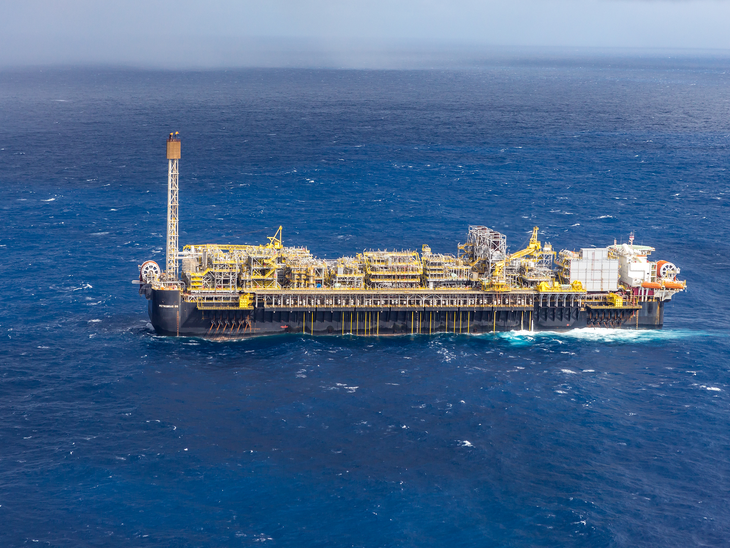The Lula, Buzios and Sapinhoá fields account for more than half of Brazil's oil and NG production.
T&B Petroleum/Press Office ANP
06/11/2019 18:06

In September 2019, oil and natural gas production in Brazil totaled 3.738 million barrels of oil equivalent per day (MMboe / d). The Lula, Buzios and Sapinhoá fields, all in the Santos Basin pre-salt, produced 1,924 MMboe / d, which corresponds to about 51.5% of Brazilian production in the month.
Oil production was approximately 2.927 million barrels per day (MMbbl / d), down 2.1% from the previous month and up 17.8% from September 2018. Gas production 129 million cubic meters per day (MMm3 / d), down 3.4% from the previous month and up 14.1% from September 2018. The main reason for the drop in production it was the scheduled stop of the Pioneer Libra FPSO in the field of Mero.
September production data are available on the Monthly Bulletin of Oil and Natural Gas Production: http://www.anp.gov.br/publicacoes/boletins-anp/2395-boletim-mensal-da-producao-de -petroleo-e-natural-gas.
Pre-salt
Pre-salt production from 110 wells was 1,827 MMbbl / d of oil and 73.3 MMm³ / d) of natural gas, totaling 2,289 MMboe / d. There was a reduction of 5.7% compared to the previous month and an increase of 28.3% compared to the same month of 2018. Pre-salt production corresponded to 61.2% of the total produced in Brazil.
Utilization of natural gas
In September, the use of natural gas was 97.5%. 67.1 MMm³ / day were made available to the market. Gas flaring in the month was 3.275 MMm³ / d, a reduction of 1.4% compared to the previous month and an increase of 5.2% compared to the same month in 2018.
Producer fields
Lula, in the Santos Basin, produced the most oil, an average of 962 MMbbl / d. It was also the largest producer of natural gas: an average of 39.7 MMm3 / d.
Origin of production
The maritime fields produced 96.4% of oil and 80% of natural gas. The fields operated by Petrobras produced 92.9% of oil and natural gas. Regarding the fields operated by Petrobras, with exclusive participation, they produced 44% of the total. National production took place in 7,221 wells, of which 655 maritime and 6,566 terrestrial.
Highlights
Estreito, in the Potiguar Basin, had the largest number of onshore producing wells: 1,105.
Marlim Sul, in the Campos Basin, was the maritime field with the largest number of producing wells: 74.
The Petrobras 66 Platform (P-66), producing in Lula Field through seven interconnected wells, produced 143.8 Mbbl / d and was the facility with the highest oil production.
The Polo Arara facility, producing in the Arara Azul, Araracanga, Carapanaúba, Cupiuba, Rio Urucu and Sudoeste Urucu fields, through 36 interconnected wells, produced 8.6 MMm³ / d and was the largest natural gas production facility.
Marginal accumulation fields
These fields produced 48.5 bbl / d of oil and 1.0 Mm³ / d of natural gas. The Itaparica field, operated by Newo, was the largest producer, with 16.7 boe / d.
Other information
In September 2019, 293 granted areas, two onerous assignment and five sharing areas, operated by 34 companies, were responsible for national production. Of these, 71 are maritime and 229 terrestrial. Of the total producing areas, 10 are related to contracts of areas containing marginal accumulations.
The average API grade was 27.5 and 36.4% of the production considered light oil (> = 31 ° API), 52.7% medium oil (> = 22 API and <31 API) and 10.9% heavy oil. (<22 API).
The mature terrestrial basins (fields / long-term tests of the Espírito Santo, Potiguar, Recôncavo, Sergipe and Alagoas basins) produced 109.7 Mboe / d, of which 87.5 thousand bbl / d of oil and 3.5 MM m³ / d of natural gas. Of this total, 101,600 boe / d were produced by Petrobras and 8,100 boe / d were produced by concessions not operated by Petrobras, of which: 369 boe / d in Alagoas, 5,238 boe / d in Bahia, 17 boe / d in Espírito Santo, 2,298 boe / d in Rio Grande do Norte and 188 boe / d in Sergipe.



